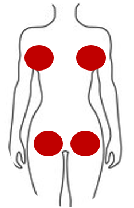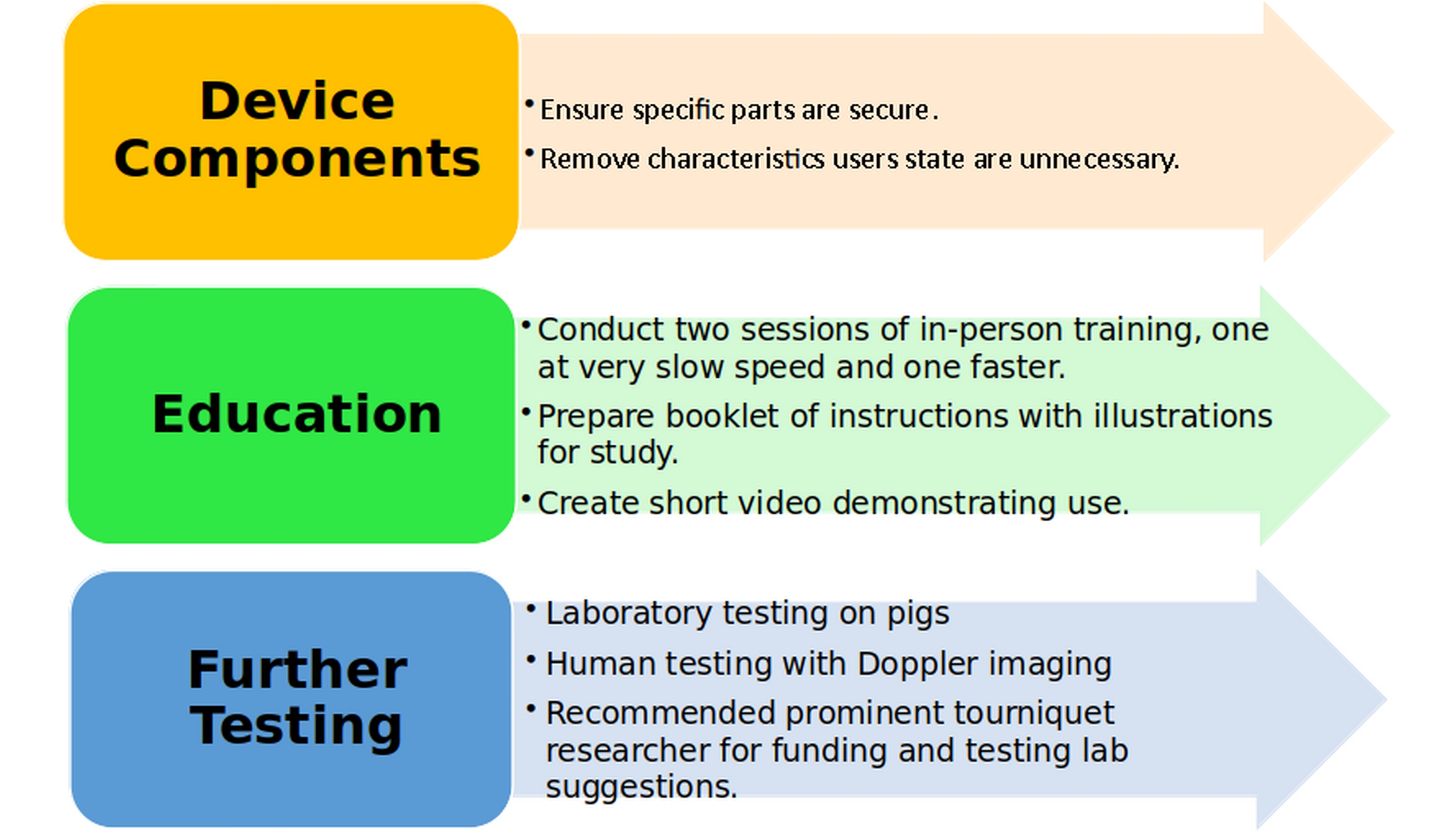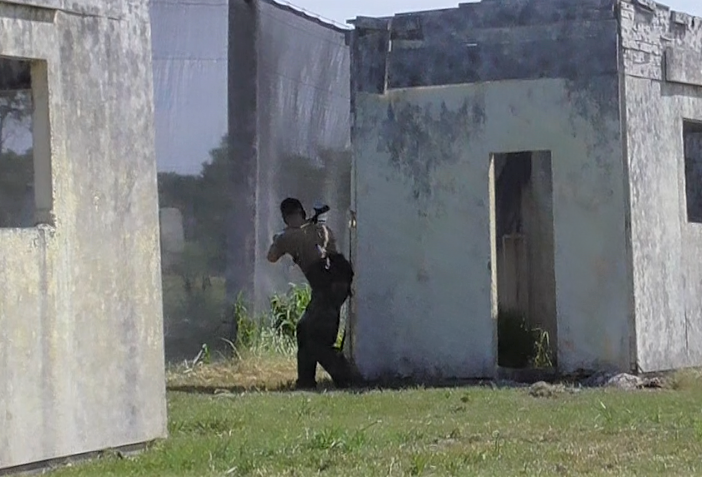Executive Summary
This project focused on the data-driven development and evaluation of a novel wearable junctional tourniquet designed for emergency medical scenarios. The primary objective was to conduct comprehensive data collection and usability testing within an environment simulating real-world conditions. Utilizing a mixed-methods approach, we gathered feedback through structured usability testing, participant interviews, focus groups, and a Kano survey to systematically assess user needs, device performance, and feature desirability.
The results directly informed critical design decisions, leading to the inclusion or exclusion of specific features to optimize user experience and operational effectiveness. Furthermore, detailed recommendations were developed to guide the next steps toward achieving FDA approval criteria for human clinical testing. This project demonstrated expertise in human factors engineering, usability testing, medical device development, and regulatory strategy alignment.
The Process: From Ideas to Execution
ARMR Systems, Inc. is a tech start-up which created a wearable junctional tourniquet for use by military and law enforcement personnel. At the time of this study there were no wearable or junctional tourniquets approved by the FDA. Traditional tourniquets cannot be effectively applied to injuries at the junctions of the torso (indicated by the red dots), which can be fatal in under 3 minutes. ARMR had never worked with a UX researcher or completed any human factors or usability studies prior to my involvement, which is critical for medical devices which need FDA approval.
After many in-depth discussions with stakeholders, who were not themselves current or former law enforcement or military personnel, we divided the areas of research into two distinctive parts.
1.Exploration – I wanted to better understand the expectations, pain points, and must-haves of likely users.
2.Validation – I needed to validate the device design under circumstances as similar as possible to real-life situations with participants who fit, as close as possible, the targeted demographic.
Research Approach and Chronology

I worked closely with key stakeholders – a team of only three people, the CEO, CIO, and the designer who iterated each wearable by hand. My role included:
Defining the Research Questions – Stakeholder questions were narrowed down to a feasible scope for the time allotted.
Creating and Conducting Battlefield Simulation – Created the most realistic scenario in which to test the wearable tourniquet. I recruited users to test the device in a simulated battlefield conditions by participating in “war games” and timed drills focused on self- and buddy-application.
Focus Group Facilitation – I led a focus group immediately after the battlefield simulation usability testing to gather first impressions while the experience was still fresh in the minds of participants.
Conducting 1:1 Interviews – Based on the data gathered from the focus group, interview topics were narrowed down to focus on specific pain points, the device’s wearability, and other factors that might lead to the adoption of the device.
Creating a User Journey Map – I created a user journey map titled “Going On Patrol” that was specifically aimed at the experiences of users with military or law enforcement training. The goal of this journey map was to record all of the steps involved in going on a patrol, from putting on the uniform until heading out. I recorded how users felt during each step and any accompanying pain points. The journey map allowed me to understand what it takes for technology to be adopted fully.
Creating and Conducting Kano Survey – A Kano survey was conducted to pinpoint key characteristics of the wearable tourniquet that user deemed vital for its adoption.
Contextual Analysis – GoPros were worn by participants during the simulation and additional footage was obtained by handheld recorders and a drone. I analyzed the video and audio to ensure I was seeing the whole picture. It answered questions such as, were there any issues that were reported that were actually due to user error, were there issues I could catch that the participants didn’t, comparing the participant experience with their experience caught on video, comparing the timing of tourniquet application during the battlefield simulation to the drills to discover differences or similarities, etc.
Quantitative Analysis – Users were grouped according to background experience: law enforcement, active duty military and reservists, law enforcement, and civilians. Analysis of video, interview, and focus group transcripts was conducted to determine if user answers varied based on background, amount of time served/serving, and users personal opinions regarding wearable technology and technological advancements in general.
Defining Key Usability Questions
- Movement
- Can the user conduct a variety of movements without restriction?
- Will the tourniquet be comfortable enough to be worn all day in addition to their normal gear?
- Unanticipated Problems
- What is the user learning curve? How long does it take a user to learn how to properly apply the tourniquet?
- What factors get in the way of proper application?
- Likelihood of Adoption
- Does it give the users a feeling of confidence?
- Does it give users a sense of safety?
- What things factor into whether or not a user will fully adopt the device?
User Testing in a Simulated Battlefield
I conducted the battlefield simulation during the summer at a paintball field in Virginia, USA. The participants wore the device for seven hours, both with and without body armor. Visual documentation included photos, GoPros, handheld recorders, drone footage, and participant observation.
I reviewed the footage and notes that were taken to find the average length of time it took for users to proficiently apply the device to both themselves and a buddy. I also compared users statements concerning their perceived usage to their actual usage in the field.
Assumptions and Constraints
This project was planned to take place in the Greater Boston, Massachusetts area, however, although the research began in Boston, ARMR moved to Baltimore, Maryland during the course of the study. In addition, all participants were from different states, so most study interviews were conducted remotely. I flew to Baltimore in order to conduct the usability testing and subsequent focus group.
Outcome
I surfaced many valuable insights regarding the likelihood of adoption of this technology, specific safety pain points, and many device details that were loved by most or all of the participants. I made specific recommendations regarding device components, knowledge-sharing, and suggestions for further testing.

ARMR Systems, Inc. incorporated the component suggestions as well as the recommendation about how to educate individuals on appropriate device usage. While this was the end of my work with the organization, they are continuing to work toward the specific testing, iterating, and financing needed for FDA approval.
